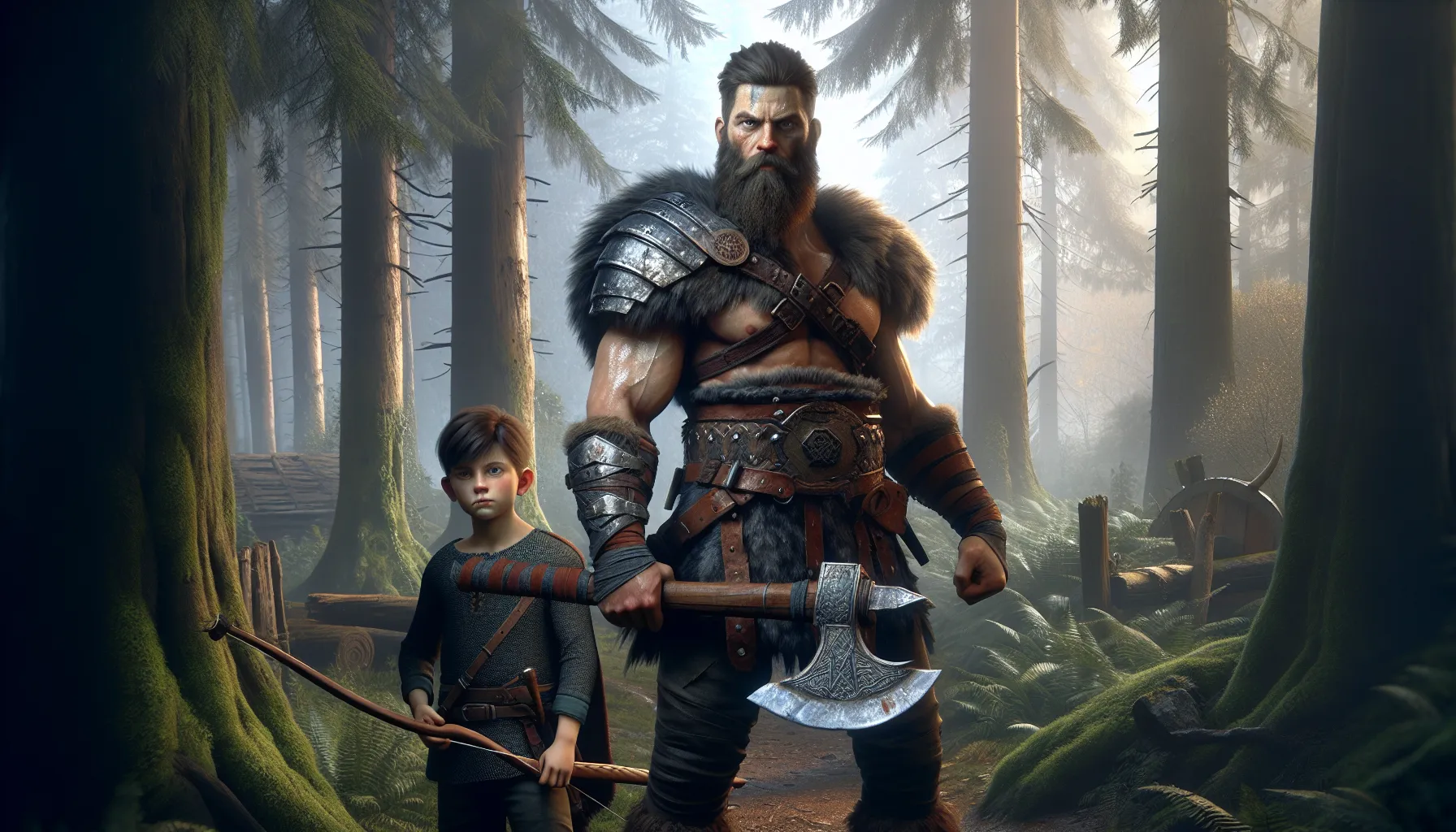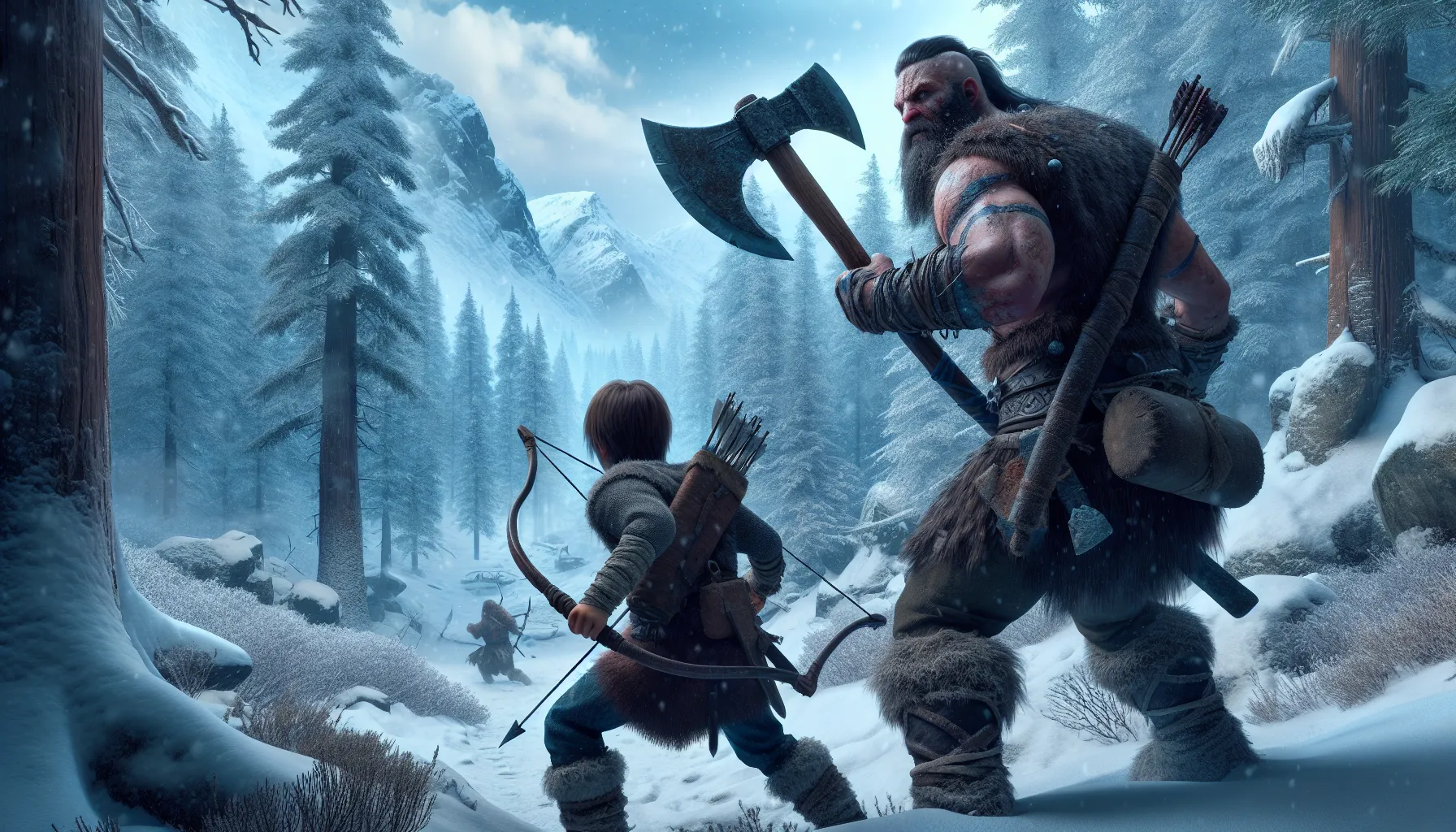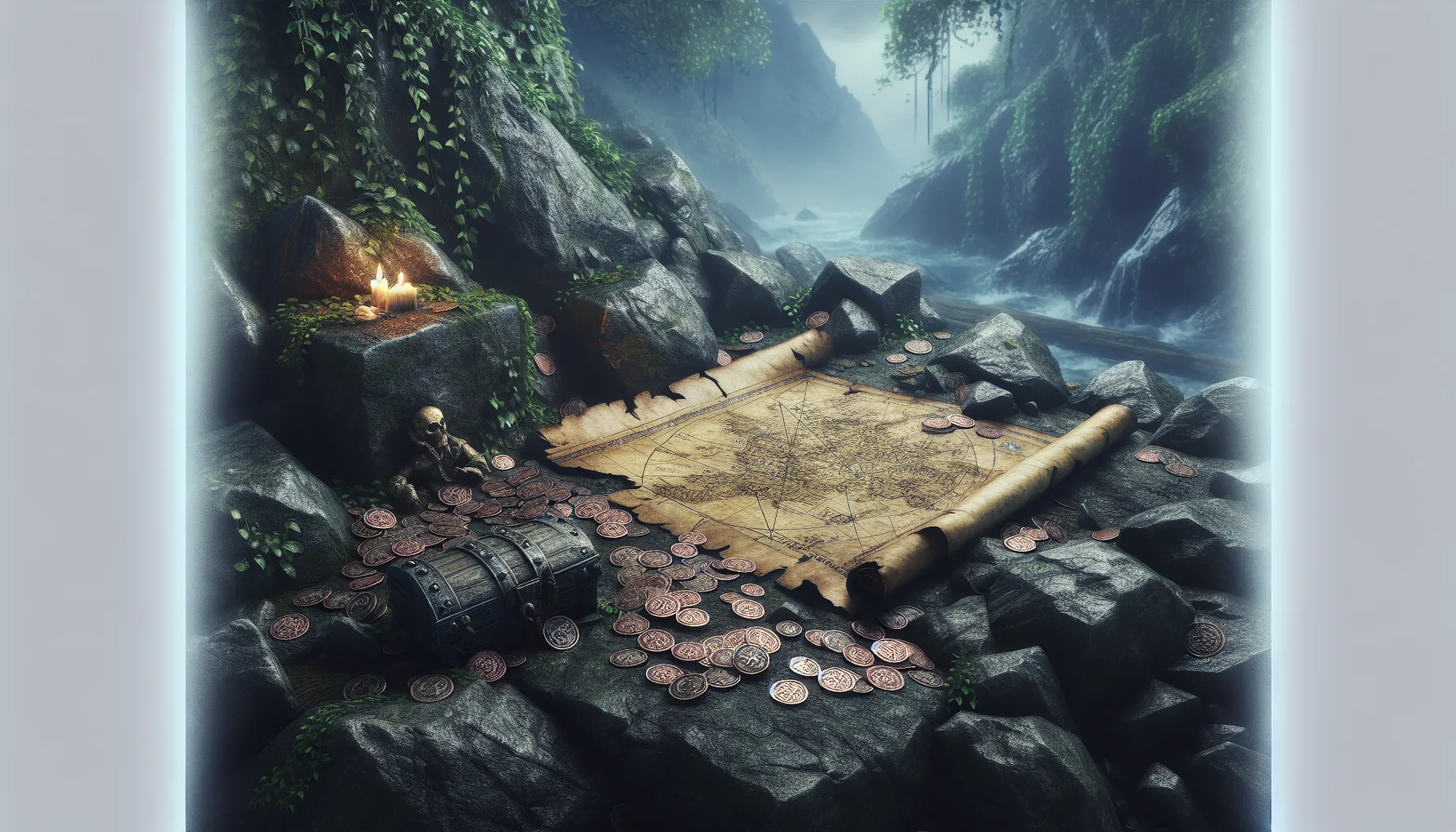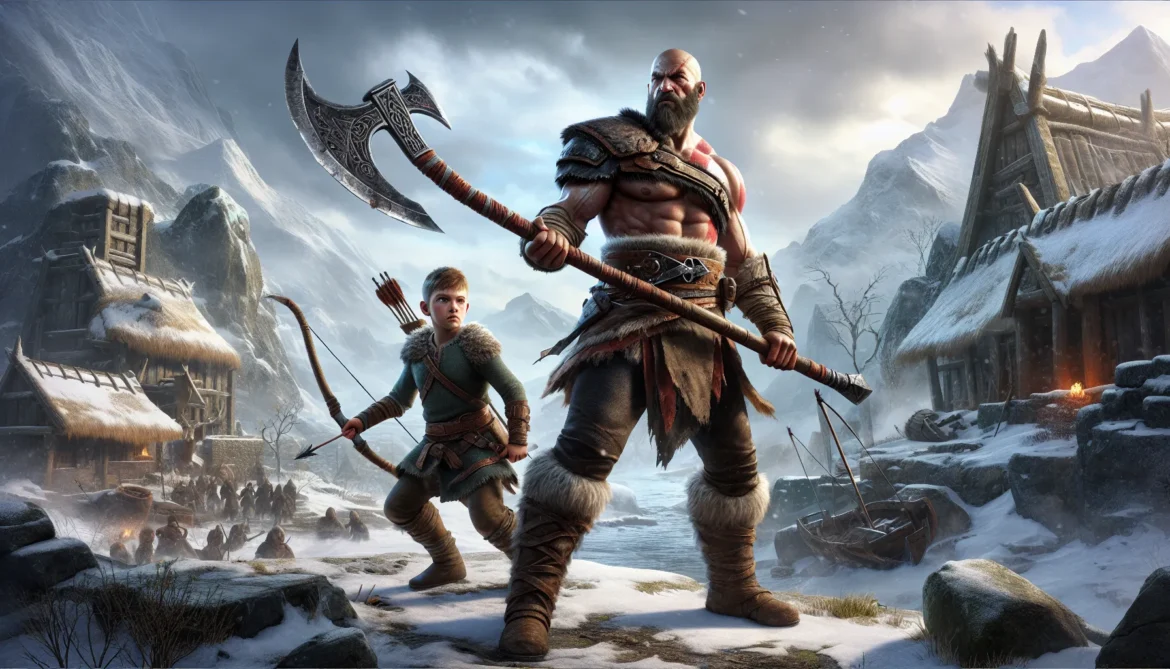Key Takeaways
- God of War offers a rich blend of storytelling, exploration, and strategic combat, with Kratos and Atreus navigating realms inspired by Norse mythology.
- Mastering combat techniques, such as parrying, timing attacks, and utilizing Atreus’s abilities, is essential for progressing through challenging battles and boss fights.
- Exploration is highly rewarding—search for hidden treasures, complete side quests, and solve puzzles to collect valuable upgrades and resources like Hacksilver and crafting materials.
- Upgrading weapons, skills, and gear enhances gameplay; focus on unlocking runic abilities, enhancing the Leviathan Axe, and investing in Atreus’s combat upgrades for better synergy.
- Optional challenges, such as Muspelheim trials and Valkyrie battles, offer high-level rewards and test advanced combat strategies, making them crucial for full completion.
- Focus on resource management by collecting crafting materials and enchantments through exploration and quests to improve armor and weapon stats effectively.
When I first dove into God of War, I was blown away by its stunning world, gripping story, and challenging gameplay. But let’s be honest—there were moments when I felt completely lost, whether it was solving a tricky puzzle, finding hidden treasures, or taking down a relentless boss. That’s where a good walkthrough can make all the difference.
Overview Of God Of War
God of War is an action-adventure game that centers on Kratos, a former Spartan warrior, and his son Atreus. Set in a world inspired by Norse mythology, it involves exploring vast realms, solving intricate puzzles, and taking on powerful enemies. The game combines a rich narrative with dynamic combat, offering a seamless blend of storytelling and gameplay.
The journey begins in Midgard, where Kratos and Atreus embark on a quest to fulfill a promise to the late Faye, Atreus’s mother. Players traverse diverse realms like Alfheim and Helheim, each presenting unique environments and challenges. Hidden paths, collectibles such as Nornir chests and runes, and side quests enrich the exploration experience.
Combat relies heavily on strategic precision, with Kratos wielding the Leviathan Axe and later gaining access to the Blades of Chaos. Each weapon offers distinct abilities, and equipping runes and talismans increases their effectiveness. Atreus also plays a vital role in combat, assisting with his bow and special abilities as players upgrade his skills.
Bosses serve as major highlights, testing skills and strategy. Memorable encounters include Baldur, Magni, Modi, and valkyries, which are among the game’s most challenging foes. A balance of exploration, combat, and story keeps the experience engaging throughout.
Getting Started

Jumping into “God of War” can feel overwhelming at first. With its detailed world and deep mechanics, a strong start makes the experience much smoother.
Essential Tips For Beginners
Exploration rewards progress. Early on, search every corner for hidden chests containing Hacksilver, health upgrades, and crafting materials. Some areas might appear inaccessible, so mark them in your mind for revisiting later with new abilities.
Master combat basics. Practice parrying enemy attacks with Kratos’s shield and using Atreus’s arrows to stun or distract foes. Learn timing for light and heavy Leviathan Axe combos to handle groups and tough enemies.
Prioritize upgrades. Upgrade Kratos’s gear and skills regularly; both improve combat performance. Invest in skills that enhance your playstyle, like precision throws or powerful crowd control moves.
Understanding The Game Mechanics
Skill trees expand options. Kratos and Atreus each have unique skill trees, unlocked using XP gained from quests and combat. Choosing skills that complement each other makes battles more manageable.
Runes customize abilities. Slot runes into weapons for special attacks, balancing offense and defense. Experiment with different rune types to adapt your strategy.
Managing resources matters. Hacksilver, crafting materials, and enchantments are necessary to upgrade armor and weapons. Exploring new areas and completing side quests often yield these valuable items.
Main Storyline Walkthrough

Progressing through God of War’s main storyline delivers an epic journey filled with pivotal missions, intense boss battles, and stunning realm exploration. Below, I’ll detail key missions and strategies to navigate the story efficiently.
Key Missions And How To Complete Them
Understanding the main missions is essential to advancing Kratos and Atreus’s journey while uncovering the game’s rich narrative.
- The Marked Trees: Starting in Midgard, I guided Kratos and Atreus as they prepared to honor Faye’s final wish. I cleared enemies while learning basic controls, ensuring I explored for hidden chests and upgrades.
- Path to the Mountain: Reaching the mountain meant solving puzzles with the Leviathan Axe, especially those involving rune locks. I battled Draugr and trolls, focusing on stagger mechanics to deal with larger groups.
- Inside the Mountain: This section required me to navigate rocky terrain, defeat dark elves, and solve environmental puzzles. I made use of Atreus’s arrows to interact with objects inaccessible to Kratos.
- Escape from Helheim: A pivotal mission in Helheim demanded strategic combat and correct rune placements. I carefully upgraded my weapons and armor before entering to handle ice-based enemies.
- Jötunheim in Reach: The final stretch to Jötunheim required me to face Baldur and deal with multiple realm travelers. Keeping gear upgraded and using runic attacks helped in winning these high-stakes battles.
Boss Battles And Strategies
Boss encounters are crucial, often marking significant narrative turns or realm progression. I found each fight uniquely challenging and rewarding with careful planning.
- The Stranger (Baldur): As the first boss, Baldur tested my understanding of dodging and parrying mechanics. I focused on spacing and counter-attacks to whittle down his health.
- The Dragon (Hræzlyr): While fighting Hræzlyr, I aimed for weak spots on the dragon’s claws and utilized Atreus’s arrows to target distant vulnerabilities.
- Sigrún (Valkyrie Queen): The hardest boss required me to master all combat mechanics. I memorized her attack patterns and used a mix of light and heavy runic attacks to stagger her while avoiding fatal blows.
- Magni and Modi: Fighting the sons of Thor introduced alternating attack patterns. I kept them apart and prioritized interrupts using Atreus’s shock arrows.
- Final Battle with Baldur: Timing was key in the final confrontation. Switching between stun and damage tactics while managing crowd control proved effective during the fight.
Strategically engaging with these missions and bosses ensured I unraveled the story successfully while improving my skills.
Side Quests And Collectibles

Side quests and collectibles offer valuable rewards and enhance the overall experience in God of War. I’ve found that taking the time to explore these optional tasks often provides rare resources, lore, and upgrades that improve gameplay.
Finding Hidden Treasures
Hidden treasures are scattered across the realms, often marked by treasure maps found during exploration. These maps describe the treasure’s location with cryptic clues and sketches. Solving these clues leads to artifacts, enchantments, and Hacksilver that boost Kratos’s strength and abilities.
For instance, in Midgard, the Dead and Bloated map directs players to treasures hidden within the Volunder Mines. I’ve noticed treasures can also reward crafting components like Svartalfheim Steel, making treasure hunting essential for upgrading gear. Searching behind waterfalls, inside caves, or atop cliffs ensures no treasure is left behind.
Completing Bonus Challenges
Optional challenges, such as trials in Muspelheim and Valkyrie battles, provide high-reward opportunities. I’ve spent hours mastering Muspelheim’s combat trials, which test your skills with varying objectives, like defeating enemies without taking damage or within a time limit. Completed trials reward you with Smoldering Embers, necessary for crafting fire-themed gear.
Valkyrie encounters are challenging side engagements scattered across realms. These powerful foes drop rare items, such as Valkyrie Helms and unique enchantments, upon defeat. I often undertake these battles after fully upgrading my equipment. Other challenges, like completing Nornir chest puzzles, also contribute to a well-rounded and rewarding gameplay experience.
Advanced Tips And Tricks
Mastering advanced strategies in God of War enhances gameplay and prepares for tougher challenges. Below, I share tips focused on combat and upgrades to help you progress efficiently.
Combat Techniques
Effective combat relies on timing, positioning, and ability usage. I recommend perfecting parries with Kratos’s shield to stagger enemies. Learn enemy attack patterns, especially for tougher foes like valkyries. Quick switching between the Leviathan Axe and Blades of Chaos increases versatility during battles; for example, use the axe for freezing enemies and the blades for crowd control.
Utilizing Atreus’s arrows strategically makes a significant difference. When fighting ranged or airborne enemies, have Atreus shoot stun arrows to interrupt their attacks. Unlocking advanced skills, like “Countering Blast” and “Frost Rush,” adds powerful moves to your repertoire, making combat more efficient. Focus rage meter management for maximum impact on larger groups or bosses.
Upgrading Weapons And Skills
Prioritizing weapon and skill upgrades ensures smoother progression. I suggest enhancing the Leviathan Axe early for increased damage output, especially against heavy enemies. Unlock runic slots to equip and use runic attacks effectively. Upgrading the Blades of Chaos by collecting Chaos Flames in the story bolsters their strength.
Investing in skills from the skill tree gives Kratos and Atreus necessary abilities. For instance, the “Executioner’s Cleave” for Kratos provides high damage, while Atreus’s “Multi-shot” enhances crowd control. Collect enchantments, such as those found in Niflheim, to boost armor stats. Regularly visit Brok and Sindri’s shops to craft and upgrade armor with high-level materials gathered during exploration or Muspelheim trials.
Conclusion
God of War is a masterpiece that blends storytelling, exploration, and combat into an unforgettable experience. Whether you’re solving puzzles, battling fierce enemies, or uncovering hidden treasures, the game keeps you on your toes every step of the way.
Having a solid strategy and taking the time to explore can make all the difference in navigating its challenges. With patience and a bit of practice, every tough boss and tricky puzzle becomes a rewarding milestone.
Enjoy the journey through the realms, and don’t forget to savor the incredible moments that make God of War such a standout adventure. Happy gaming!
Frequently Asked Questions
What is the main storyline of God of War?
The main storyline follows Kratos and his son Atreus as they journey through a Norse mythology-inspired world to fulfill Atreus’s late mother Faye’s final wish. Along the way, they face powerful enemies, solve complex puzzles, and explore vast realms like Alfheim and Helheim.
What are some beginner tips for playing God of War?
Beginners should focus on exploring to find hidden chests and collect resources, mastering parrying and Atreus’s bow abilities, and upgrading Kratos’s gear and skills. Understanding the skill tree and balancing upgrades are key to overcoming tougher challenges.
How important is exploration in God of War?
Exploration is crucial, as it helps uncover hidden treasures, resources, and crafting materials. Side quests and collectibles not only enhance your gear and weapons but also expand the game’s lore and provide a more immersive experience.
What are the main weapons in God of War?
Kratos wields the Leviathan Axe, which can freeze enemies and return when thrown, and later, the iconic Blades of Chaos. Atreus supports in combat with his bow and special abilities, adding a strategic advantage.
Are boss battles difficult in God of War?
Boss battles can be challenging, requiring strategic combat and understanding enemy patterns. Memorable fights like Baldur, valkyries, and Hræzlyr test your skills, but mastering combat basics and upgrading gear can make these encounters manageable.
What is the best way to upgrade gear in God of War?
Players should prioritize collecting Hacksilver and crafting materials from chests, quests, and exploration. Regularly visiting shops to craft and upgrade weapons, armor, and enchantments will boost Kratos’s strength and survivability.
Are side quests worth completing in God of War?
Yes, side quests provide rare resources, lore, and valuable upgrades. They often lead to hidden treasures, artifacts, and optional boss fights, enhancing the overall gameplay experience and helping players progress more effectively.
How does the skill tree work in God of War?
The skill tree allows players to unlock new combat abilities for Kratos and Atreus. Skills are divided among weapon types and are purchased with XP gained through battles and quests, enabling customization based on your preferred playstyle.
What resources are most important in the game?
Hacksilver and crafting materials are the most important resources. They are used for crafting, upgrading gear, and purchasing items. Players should also gather enchantments and runes to boost stats and customize weapon abilities.
Are there optional challenges in God of War?
Yes, optional challenges like Muspelheim trials and Valkyrie battles test your skills and offer high rewards. Completing these challenges provides powerful upgrades and a sense of achievement, making them worth pursuing for dedicated players.






